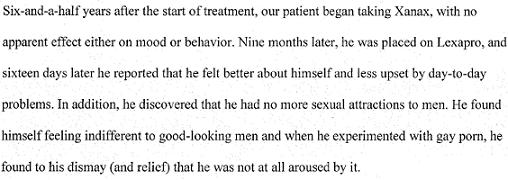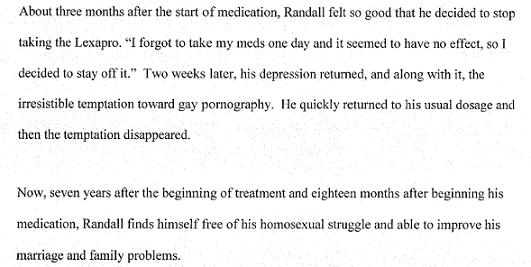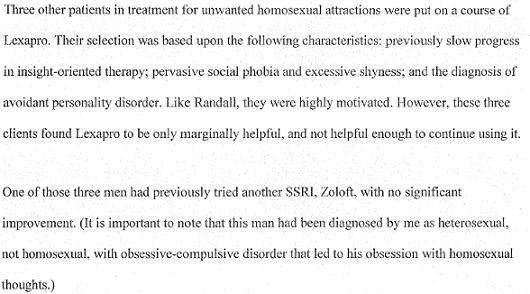Last week, I commented on what I see as an evangelical blackout of sexual orientation research by Christian media and organizations. While I stand by that viewpoint, the situation is actually worse than a blackout. The blackout is selective; some new research is reported. However, the studies reported and the way they are reported seem designed to create a slanted picture.
A case in point. Currently, on the NARTH (National Association for the Research and Therapy of Homosexuality) website, scientific advisory board member, Chris Rosik, reviews a new report from Gartrell, Bos and Goldeberg about lesbian parenting recently published in the Archives of Sexual Behavior. The headline for the review is
New Study: Daughters of Lesbian Parents More Likely to Engage in Same-Sex Behavior and Identify as Bisexual
This is definitely a new study. The blackout is not total, but as I will demonstrate, it is selective. NARTH ignores the hard science involved in the brain scan studies but finds one aspect of a small longitudinal study of lesbian parenting to report. Now that you read the headline, read what Rosik says about how the study can be used.
While this small study is valuable as a starting point for longitudinal research into same-sex parenting, professionals and policy makers should be very wary of making any meaningful conclusions from its findings. Serious methodological limitations also argue against making sweeping generalizations. As is the case for the vast majority of studies in this area, the sample size is quite small, constituting only 78 adolescents. The sample of lesbian parents is self-selected and appears to be different from the general population on important demographics such as socioeconomic status and educational attainment. Demand characteristics (i.e., external influences such as political goals that might motivate study participants to respond in a particular manner) are not considered or assessed by the study’s authors with respect to the lesbian mothers or their adolescent children.
And then…
Certainly the Gatrell, et al. (2011) study provides some intriguing though entirely non-generalizable findings that are consistent with the hypothesis that non-heterosexual experiences and identities are more common among daughters of lesbian families than those raised in heterosexual families.
First, Rosik reports, via headline, the finding that would be of concern to religious conservatives but then in the article says one cannot make such generalizations. If one cannot generalize beyond the sample, then why report the finding as if one could?
The study also found that no children were abused in lesbian homes. This finding is in contrast to heterosexual families where abuse is reported (26% of teens report physical abuse by a parent or caregiver according to national surveys). Since NARTH is commonly represented in cases against same-sex parenting, and such information is relevant to their membership, why was that fact not a part of the headline?
Another interesting finding in the study was that boys were less likely to have been sexual involved with girls in lesbian families than in straight families. Isn’t that what abstinence educators want to promote?
My point here is that NARTH leaders do keep an eye out for new research, however, their reporting of them is selective. And then when they choose to review a study, their review is selective.
I have established that NARTH is a key source of information for Christian right organizations. When some relevant studies are ignored, and others are selectively reported, it seems clear to me evangelicals are poorly served by the organizations they count on for information.




